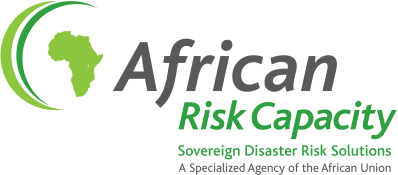Country Engagement Process

As a facility built on Pan-African solidarity and led by African governments, strong relationships with and between ARC Member States is the bedrock of ARC’s work. With Disaster Risk Management and Financing (DRMF) being a relatively new concept on the African continent, relationship building and engagement with countries lays the foundation for transforming disaster risk management and eventual insurance policy uptake. The country engagement function directs its efforts towards creating awareness, introducing and growing the concept, cementing relationships with key government departments and other stakeholders, and finally, developing countries’ capacity to make informed decisions on country-owned strategies and concept ownership. This process is guided by a progressive Project Life Cycle that promotes transparency and engagement at all levels and follows the following stages.
1. Becoming an ARC Member State
To become an ARC Member State and access the services the ARC Group offers, AU Member States must sign the ARC Establishment Treaty. As signatories to the ARC Establishment Treaty, African governments created and sustain the ARC Agency and its affiliates (currently only ARC Insurance Company Limited (ARC Ltd)).
2. Scoping Mission
To ensure that ARC can make meaningful impact in improving DRM systems in Member States, a scoping mission is conducted in each country to identify if the ARC is an appropriate risk management system for the country and where the organisation can add the most value in the optimising disaster response systems. Once focal government ministries are identified and the programme coordination structure is set up, initial technical workshops are initiated with the relevant staff to introduce the ARC capacity building programme and the different elements of DRM that the ARC Group offers.
3. ARC Capacity Building Programme
Once it is determined that ARC can effectively contribute to improving DRM systems in-country, ARC and the government sign a Memorandum of Understanding to formally launch the ARC capacity building programme. The programme is coordinated by the government ministry identified as the best suited to drive the programme forward while ARC provides technical guidance to national specialists identified and convened by the government in a TWG. Lasting up to 24 months, this capacity building programme strengthens national systems and prepares governments to join ARC risk pools by building their capacities in risk modeling, contingency planning, and risk transfer mechanisms.
Find out more about the ARC Capacity Building Programme.
4. Certificate of Good Standing
Upon completion of capacity building work, countries have a customised risk model with Africa RiskView (ARC’s technical engine that enables the monitoring of seasons and estimation of impact of drought) and a national operations plan that will be used to utilize any potential ARC payout effectively when catastrophes strike. To quality assure the work completed by the country, TWG groups, the Africa RiskView customisation reports and the national contingency plans are reviewed by various committees. The Africa RiskView customisation reports are collectively examined by regional Africa RiskView Customisation Review Committees, while national contingency plans are reviewed by the Peer-Review Mechanism using a set of standards and guidelines. This is followed by a review by the ARC Agency Governing Board based on a set of criteria that was approved by the Conference of Parties before a Certificate of Good Standing is issued. This Certificate of Good Standing demonstrates that countries have successfully strengthened their DRM systems and have the capacity to use the available tools to benefit from joining the ARC risk pool.
5. Joining the risk pool
Countries that hold a valid Certificate of Good Standing are eligible to participate in the annual ARC risk pools that cover an agricultural season. A risk pool is a mechanism where individual country risks are transferred and combined. That pool then takes on the risk profile of the group rather than the risk profile of each individual country, combining the uncertainty of individual risks into a calculable risk for the group. The ARC risk pool enables African countries to secure contingency funds for extreme weather events and natural disasters by capitalising on the natural diversification of weather risk across the continent.
Through the capacity building programme, governments model their risk for a particular hazard and select risk transfer parameters based on the customised risk index. These parameters determine the amount of risk a country transfers to ARC Ltd, the country’s insurance policy, and the insurance premium. Policies are issued by ARC Ltd and signed by governments to secure participation in the risk pool. Premium payments are received by ARC Ltd to capitalise the risk pool which will disburse funding in the case of a disaster that meets pre-determined triggers set collaboratively between government and ARC during the said season to the participating countries.
6. Payouts
Where a payout triggers following an extreme weather event, ARC rapidly initiates a process to release a pay-out to enable early response. In-season monitoring conducted by countries and ARC enables both parties to identify where the most impacted areas are and the amount of the payout based on estimated impact. With this knowledge, countries develop Final Implementation Plans that elaborate on pre-approved country contingency plans to facilitate targeted interventions that respond quickly and effectively to the populations impacted by disasters. Funds are paid-out within 2-4 weeks after the defined end of season for timely interventions that will deliver assistance to vulnerable households within 120 days.





